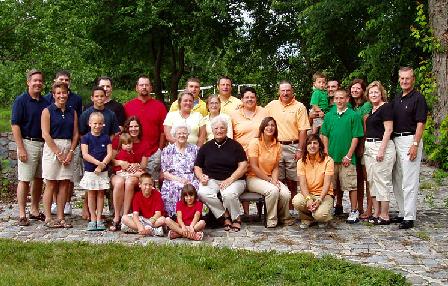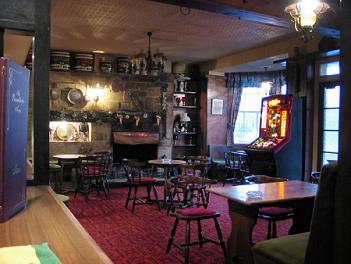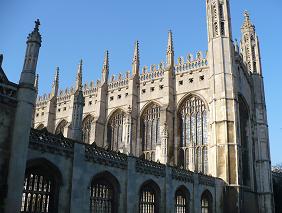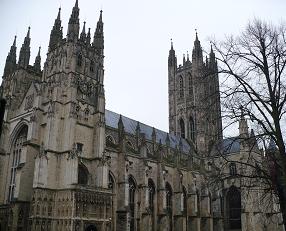
































WB 2008
|
Nowa strona 1
Throughout the society,
religion and education in United Kingdom
British society is a
mixture of nearly all races, religions, stages of education and social
positions. As a post-colonial empire it gathers its citizens all over the world
and as one of the economical leaders it needs labour force. It’s a typical
modern society of individuality shown in decreasing of familiar ties, weakened
position of a religion, but in a growing one of education as well.
The diversification
in British population, settlement and migration
 The
population of the United Kingdom is estimated on more than 60 million people
which is the third largest in Europe (after Germany and France) and the
twentieth biggest in the world. More than ten per cent of them live in London
and its suburban areas, while the very majority settled the urban
(centres of cities, blocks of flats or apartments among skyscrapers and
factories) and suburban (suburbs near bigger towns, cosy mixture of
municipal and rural features) areas of economically developed south-east.
Nine per ten British citizens are white, the rest are Asians and Africans
that came to Britain years ago, mainly from Commonwealth countries and
China, besides about 10 per cent of British society belongs to ethnic
minority. Between 2004 and 2008 more than two million of European Union
workers came to Britain to get a job and the numbers are still raising, which
means that the migration isn’t preserved only for the Third World countries. The
structure of age is changing as an effect of World War II deaths and a baby
boom soon after its end. That’s why in 1980s unemployment rate dramatically
raised while ten years later there were too few workers to fulfil retirement
holes created in corporations. The
population of the United Kingdom is estimated on more than 60 million people
which is the third largest in Europe (after Germany and France) and the
twentieth biggest in the world. More than ten per cent of them live in London
and its suburban areas, while the very majority settled the urban
(centres of cities, blocks of flats or apartments among skyscrapers and
factories) and suburban (suburbs near bigger towns, cosy mixture of
municipal and rural features) areas of economically developed south-east.
Nine per ten British citizens are white, the rest are Asians and Africans
that came to Britain years ago, mainly from Commonwealth countries and
China, besides about 10 per cent of British society belongs to ethnic
minority. Between 2004 and 2008 more than two million of European Union
workers came to Britain to get a job and the numbers are still raising, which
means that the migration isn’t preserved only for the Third World countries. The
structure of age is changing as an effect of World War II deaths and a baby
boom soon after its end. That’s why in 1980s unemployment rate dramatically
raised while ten years later there were too few workers to fulfil retirement
holes created in corporations.
The structure of
employment and its consequences
 Among
about 60 million of British people, about 40 million are in a working age and
those are traditionally divided into white-collar workers (working
intellectually having a knowledge of modern technologies like doctors, lawyers,
engineers, officers, self-employed) and blue-collar workers (working
manually like builders, janitors, miners, smiths). However, modern times has
brought quite a large group of people working home or being hired for particular
jobs and the visible decrease of blue-collar workers who became the minority of
employed. The development in corporations caused high differences in salaries
– one in three full time workers get less than 66 per cent of an average salary
which is an European decency threshold. The level of unemployment is low
and those with no job are given a social support. Among
about 60 million of British people, about 40 million are in a working age and
those are traditionally divided into white-collar workers (working
intellectually having a knowledge of modern technologies like doctors, lawyers,
engineers, officers, self-employed) and blue-collar workers (working
manually like builders, janitors, miners, smiths). However, modern times has
brought quite a large group of people working home or being hired for particular
jobs and the visible decrease of blue-collar workers who became the minority of
employed. The development in corporations caused high differences in salaries
– one in three full time workers get less than 66 per cent of an average salary
which is an European decency threshold. The level of unemployment is low
and those with no job are given a social support.
A job is also strictly
connected with social position. Blue-collar workers represent mainly relatively
poor and charity supported working class, while white-collar workers
belong to the quickly developing since post-war times middle class which
usually enjoy a suburban house, a car and holidays abroad creating the majority
of British society. The richest directors and aristocracy (is still given a
great respect despite of decreasing power and limiting number of owned
properties) are the core of upper class that lives in palaces, have
servants and send children to famous, public schools. According to law women are
legally equal to men, however a job makes serious differences in this case. In
case of sex discrimination or just a tradition there are almost no women
on directorships in most companies, while among university professors or
surgeons only 5 per cent are women, although the number of financially active
female grew twice since 1950s.
Economical and social
divisions among British nation
 The
mountainous, marshy areas of Scotland and Wales are generally connected with
bigger unemployment, poverty, but pretty strong familiar relationship. It’s the
‘peripheral’ area of poorer development when it comes to economical
factors. That’s why a lot of people move into the ‘core’, which is the
centre of industry and trade (a lowland terrain in 120 miles long radius from
London). The great advantage of the ‘core’ is a profusion of water, coal,
pleasant climate that affected the development of industry, agriculture
and the communication and trade with the world, although you need to take under
account twice higher prizes of houses in the ‘core’. The
mountainous, marshy areas of Scotland and Wales are generally connected with
bigger unemployment, poverty, but pretty strong familiar relationship. It’s the
‘peripheral’ area of poorer development when it comes to economical
factors. That’s why a lot of people move into the ‘core’, which is the
centre of industry and trade (a lowland terrain in 120 miles long radius from
London). The great advantage of the ‘core’ is a profusion of water, coal,
pleasant climate that affected the development of industry, agriculture
and the communication and trade with the world, although you need to take under
account twice higher prizes of houses in the ‘core’.
As the prizes of
properties incline corporations to settle in the north, which brings problems
with cheaper, but less-qualified labour force. however permanent progress among
‘peripheries’ will lead to breaking the divisions among British people.
This would be very difficult from the geographical and social point of view, but
it’s quite probable soon.
People and their
familiar ties
 As
Britain consist of about 60 million citizens, it means that those people have to
be grouped in teens millions families when accepting the definition of a
family as a group of at least two related people connected with feelings of
love and confidence. A few years ago a nuclear family gained an
extremely big popularity and consisted only of a couple and perfectly their two
children (son and daughter if possible) with relatively smaller cooperation with
other relatives. The more traditional, multigenerational family was
reflected with a vast assistance of other families and e.g. grandparents, aunts.
However the new millennium saw a breakthrough in case of familiar ties and when
two in three marriages finish with a divorce in Britain keeping a nuclear
family seems to be impossible, moreover for a few years a marriage can be
created also by people of the same sex. We observe a gaining number of
single-parent families or families educating children from different
marriages. As in 1961 only one per cent of couples lived together before
wedding, now it’s a very majority. As
Britain consist of about 60 million citizens, it means that those people have to
be grouped in teens millions families when accepting the definition of a
family as a group of at least two related people connected with feelings of
love and confidence. A few years ago a nuclear family gained an
extremely big popularity and consisted only of a couple and perfectly their two
children (son and daughter if possible) with relatively smaller cooperation with
other relatives. The more traditional, multigenerational family was
reflected with a vast assistance of other families and e.g. grandparents, aunts.
However the new millennium saw a breakthrough in case of familiar ties and when
two in three marriages finish with a divorce in Britain keeping a nuclear
family seems to be impossible, moreover for a few years a marriage can be
created also by people of the same sex. We observe a gaining number of
single-parent families or families educating children from different
marriages. As in 1961 only one per cent of couples lived together before
wedding, now it’s a very majority.
British sense of community
in clubs and organisations
 British
society is much diversified in case of migrations and in many ways is
individualistic as a consumptional lifestyle gives no bigger financial problems
that used to join people. Otherwise, people (averagely one in six) gather in
different organisations of voluntary activity like charity organisations,
neighbourhood action groups, choirs, drama clubs, politics just to
persuade central government to some actions or at least spend a good time with
friends. Actually there are 200,000 of such groups registered by government and
probably another 200,000 exist as well. Even most of them has an annual budget
smaller than a £1000,
the voluntary actions for different people are extremely important. Moreover,
many organisations gather people of the same origin, dialect, the fans of the
same sport club, especially football, who unfortunately has lately been
associated rather with hooligans fighting during the matches than with gentle
fans. A popular place of public meetings is British pub – an area of
beer, discussions, gossips, jokes and tightening social ties whatever position
in hierarchy you possess. British
society is much diversified in case of migrations and in many ways is
individualistic as a consumptional lifestyle gives no bigger financial problems
that used to join people. Otherwise, people (averagely one in six) gather in
different organisations of voluntary activity like charity organisations,
neighbourhood action groups, choirs, drama clubs, politics just to
persuade central government to some actions or at least spend a good time with
friends. Actually there are 200,000 of such groups registered by government and
probably another 200,000 exist as well. Even most of them has an annual budget
smaller than a £1000,
the voluntary actions for different people are extremely important. Moreover,
many organisations gather people of the same origin, dialect, the fans of the
same sport club, especially football, who unfortunately has lately been
associated rather with hooligans fighting during the matches than with gentle
fans. A popular place of public meetings is British pub – an area of
beer, discussions, gossips, jokes and tightening social ties whatever position
in hierarchy you possess.
British system of
elementary, secondary and high education and its effects
 Education
system has been attempted to be improved by every post-war government and always
has been an area of criticism. Children in United Kingdom are legally forced to
start attending school which may be state-funded or fee-paying
(public at the cost of about £7000
a year) at the age of 5 when they enter infant school. Being 8 they go to
junior school and finally as 11 years old they attend secondary school
which lasts until they are 16. Then, students take the General Certificate of
Secondary Education to assess their educational skills and abilities. Those
who want to continue studying in case of later academic education may choose
learning two or three subjects until their 18 in a so called ‘sixth form’
which is a prolongation of secondary school. The highest education level is
assured by public colleges like Winchester (founded 1382) or Eton
(founded 1440) which enjoy a viable independence, high discipline and top social
positions (authorities, law, medicine, armed forces) of its graduates. Education
system has been attempted to be improved by every post-war government and always
has been an area of criticism. Children in United Kingdom are legally forced to
start attending school which may be state-funded or fee-paying
(public at the cost of about £7000
a year) at the age of 5 when they enter infant school. Being 8 they go to
junior school and finally as 11 years old they attend secondary school
which lasts until they are 16. Then, students take the General Certificate of
Secondary Education to assess their educational skills and abilities. Those
who want to continue studying in case of later academic education may choose
learning two or three subjects until their 18 in a so called ‘sixth form’
which is a prolongation of secondary school. The highest education level is
assured by public colleges like Winchester (founded 1382) or Eton
(founded 1440) which enjoy a viable independence, high discipline and top social
positions (authorities, law, medicine, armed forces) of its graduates.
 One
in five British students attend university, however in Germany or France it
would be four in five ones. It’s just because high education is extremely
expensive and with a good system of secondary education simply not essential to
attend even more sophisticated posts. Universities are generally divided in four
groups – ancient English (Oxford and Cambridge which are the oldest and
most significant British universities gaining the fame and respect in case of
high educational level all over the world since twelfth century and commonly
known with the name ‘Oxbridge’), ancient Scottish (Glasgow, Aberdeen, St
Andrews, Edinburgh), redbrick (built in 19th century in
industrial cities like Birmingham, Manchester, Nottingham, Newcastle, Bristol
and Liverpool) and plate glass (founded with the development of higher
schooling in 1950s in Sussex or Kent). After university studies in England you
get the title of a Bachelor of Arts (or Science) and after additional
courses the title of a Master of Arts (or Science). On the other hand the
polytechnics provide education in technological (electric or mechanic) skills
for engineers, constructors, physicists etc. Open University is a
slightly different kind of institution where all of those who regret not having
made academic studies in younger age may study by mail, radio, television or
Internet. One
in five British students attend university, however in Germany or France it
would be four in five ones. It’s just because high education is extremely
expensive and with a good system of secondary education simply not essential to
attend even more sophisticated posts. Universities are generally divided in four
groups – ancient English (Oxford and Cambridge which are the oldest and
most significant British universities gaining the fame and respect in case of
high educational level all over the world since twelfth century and commonly
known with the name ‘Oxbridge’), ancient Scottish (Glasgow, Aberdeen, St
Andrews, Edinburgh), redbrick (built in 19th century in
industrial cities like Birmingham, Manchester, Nottingham, Newcastle, Bristol
and Liverpool) and plate glass (founded with the development of higher
schooling in 1950s in Sussex or Kent). After university studies in England you
get the title of a Bachelor of Arts (or Science) and after additional
courses the title of a Master of Arts (or Science). On the other hand the
polytechnics provide education in technological (electric or mechanic) skills
for engineers, constructors, physicists etc. Open University is a
slightly different kind of institution where all of those who regret not having
made academic studies in younger age may study by mail, radio, television or
Internet.
Faith, religions and
ecclesiastical traditions in Britain
 In
Britain all the citizens are free in their belief and may attend every
church or sect or not attend any, even the monarch is the Head of Anglican
Church and must be protestant as well as his/her family, though persecutions of
non-protestants finished in 19th century. Generally, one in six
British belong to a Christian Church with the very majority gathered in the
Church of England (15 million) which is a protestant faith founded in 1534
by king Henry VIII who didn’t get the divorce with his wife Catherine of Aragon
from papacy known also as the Anglican Church or in the Church of Scotland
(2 millions) which similarly is a protestant faith though having its roots in
the rise of Christianity in Scotland founded in 1560. The Head of the Anglican
Church nominates archbishops, bishops and deans who must be loyal to the heir
according to the Prime Minister’s (who doesn’t have to be protestant)
recommendation. The Archbishop of Canterbury is Primate of All England
and the most senior spiritual leader, while the Archbishop of York is a
Primate of England with a bit smaller power and responsibility and both of them
are the heads of main ecclesiastical provinces (there are also 42 dioceses with
the dominion of bishops) on which England is divided. Apart from National
Churches, in Britain there are almost 5 million of Roman Catholics, 1,5
million of Moslems, a million of Methodists, 700,000 of
Hinduists, 300,000 of Jewish etc. but only ten per cent of overall
citizens regularly attend church services and this number is still decreasing.
In England only 13 per cent of adult citizens are members of some kind of a
church, in Wales it’s 23 per cent, in Scotland 37 and in Northern Ireland almost
80. In
Britain all the citizens are free in their belief and may attend every
church or sect or not attend any, even the monarch is the Head of Anglican
Church and must be protestant as well as his/her family, though persecutions of
non-protestants finished in 19th century. Generally, one in six
British belong to a Christian Church with the very majority gathered in the
Church of England (15 million) which is a protestant faith founded in 1534
by king Henry VIII who didn’t get the divorce with his wife Catherine of Aragon
from papacy known also as the Anglican Church or in the Church of Scotland
(2 millions) which similarly is a protestant faith though having its roots in
the rise of Christianity in Scotland founded in 1560. The Head of the Anglican
Church nominates archbishops, bishops and deans who must be loyal to the heir
according to the Prime Minister’s (who doesn’t have to be protestant)
recommendation. The Archbishop of Canterbury is Primate of All England
and the most senior spiritual leader, while the Archbishop of York is a
Primate of England with a bit smaller power and responsibility and both of them
are the heads of main ecclesiastical provinces (there are also 42 dioceses with
the dominion of bishops) on which England is divided. Apart from National
Churches, in Britain there are almost 5 million of Roman Catholics, 1,5
million of Moslems, a million of Methodists, 700,000 of
Hinduists, 300,000 of Jewish etc. but only ten per cent of overall
citizens regularly attend church services and this number is still decreasing.
In England only 13 per cent of adult citizens are members of some kind of a
church, in Wales it’s 23 per cent, in Scotland 37 and in Northern Ireland almost
80.
Darmowy hosting zapewnia PRV.PL
|



































 Among
about 60 million of British people, about 40 million are in a working age and
those are traditionally divided into white-collar workers (working
intellectually having a knowledge of modern technologies like doctors, lawyers,
engineers, officers, self-employed) and blue-collar workers (working
manually like builders, janitors, miners, smiths). However, modern times has
brought quite a large group of people working home or being hired for particular
jobs and the visible decrease of blue-collar workers who became the minority of
employed. The development in corporations caused high differences in salaries
– one in three full time workers get less than 66 per cent of an average salary
which is an European decency threshold. The level of unemployment is low
and those with no job are given a social support.
Among
about 60 million of British people, about 40 million are in a working age and
those are traditionally divided into white-collar workers (working
intellectually having a knowledge of modern technologies like doctors, lawyers,
engineers, officers, self-employed) and blue-collar workers (working
manually like builders, janitors, miners, smiths). However, modern times has
brought quite a large group of people working home or being hired for particular
jobs and the visible decrease of blue-collar workers who became the minority of
employed. The development in corporations caused high differences in salaries
– one in three full time workers get less than 66 per cent of an average salary
which is an European decency threshold. The level of unemployment is low
and those with no job are given a social support.  Education
system has been attempted to be improved by every post-war government and always
has been an area of criticism. Children in United Kingdom are legally forced to
start attending school which may be state-funded or fee-paying
(public at the cost of about
Education
system has been attempted to be improved by every post-war government and always
has been an area of criticism. Children in United Kingdom are legally forced to
start attending school which may be state-funded or fee-paying
(public at the cost of about